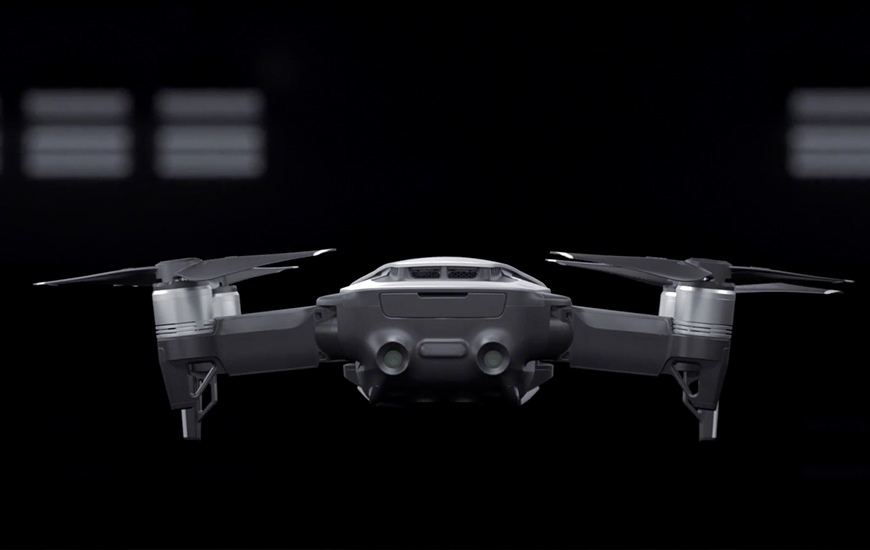DJI has recently announced a new drone in their lineup, the Mavic Air. This drone sits in between the Mavic Pro and the DJI Spark.
Hello Mavic Air
The Mavic Air seems to be a more attractive option for Spark owners wanting to upgrade but are not willing to go right up to the Mavic Pro. What would be a major selling point of the Air compared to the DJI Spark is that the wings are retractable. This is a selling point as it may be an easier solution logistically – it will reduce the likelihood of damage and also give more options in terms of how you transport the drone.
The Mavic Air splits the difference between the Spark and Mavic Pro, in terms of physical properties. The body design and size has more in common with the Spark, but it borrows a wing design similar to that of the Mavic Pro. The difference in the wings lies in the wingspan and no overlapping of the wings when folding them back into the drone. As the wingspan of the Air is smaller, it will be more susceptible to loss of control in strong winds as opposed to the Pro.
The safety measures have been amped up as DJI have implemented sensors now to the rear of the Air in addition to the already existing frontal and downward sensors from the Pro.
The camera is a slight upgrade from the Mavic Pro. The Mavic Pro can record 4K at 30 frames per second but at 60 mbs whereas the Mavic Air can record at 100 mbs. This will slightly aid the issues of clarity particularly in areas with trees or foliage.
The top speed of the Mavic Air edges out the Mavic Pro, with the Air topping the Pro by 3.4kph boasting a max speed of 68.4kph.
The Air has also introduced an in-built sphere panorama function that claims to stitch 25 photos together in eight seconds, which creates a 32MP photo.
The benefit of the size of the Air means there is a drawback – its flight time, which is down to 21 minutes. That is also most likely only in perfect weather conditions. A more realistic way of viewing it would be 10-15 minutes, varying on weather and utilizing the last 10% of the battery to return back and land.
The controller’s design is similar to the Spark’s and doesn’t have an LED screen.
This drone is fantastic for people who want to have an ultra portable drone that has pretty decent quality footage. As I already own a Mavic Pro, I am still adamant about sticking with it as the Air doesn’t have the features or upgrades I am after.
Key features:
Camera
- 1/2.3” CMOS sensor
- 12 Megapixels
- 4k 30p – 100Mbps
- FullHD 120p
- MOV/MP4 Codec
Physical
- 430g
- 68.4kph top speed
- 21 minutes battery time
More specs here.
Daniel Beleski is an Editor and experienced drone operator at Sydney based video production company, Rocket Productions. You’ll find more useful articles on our blog.


